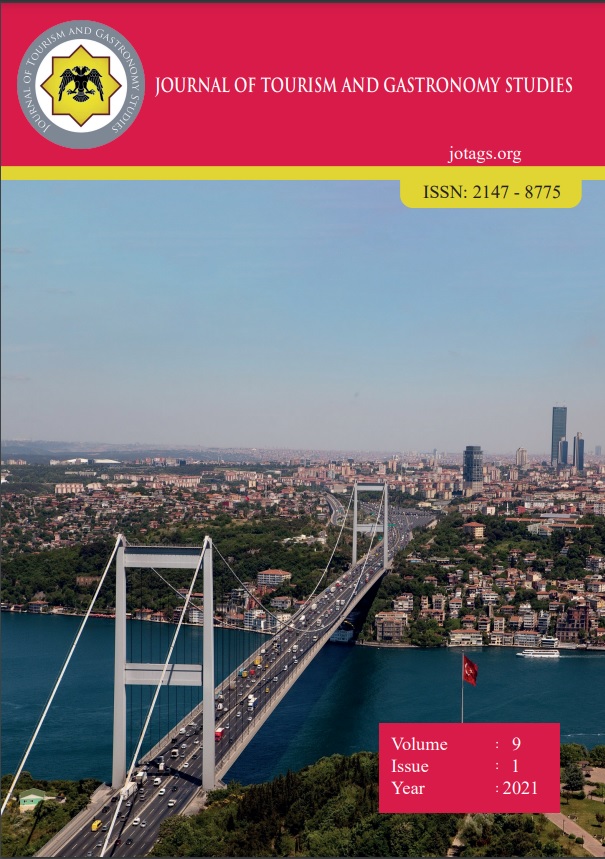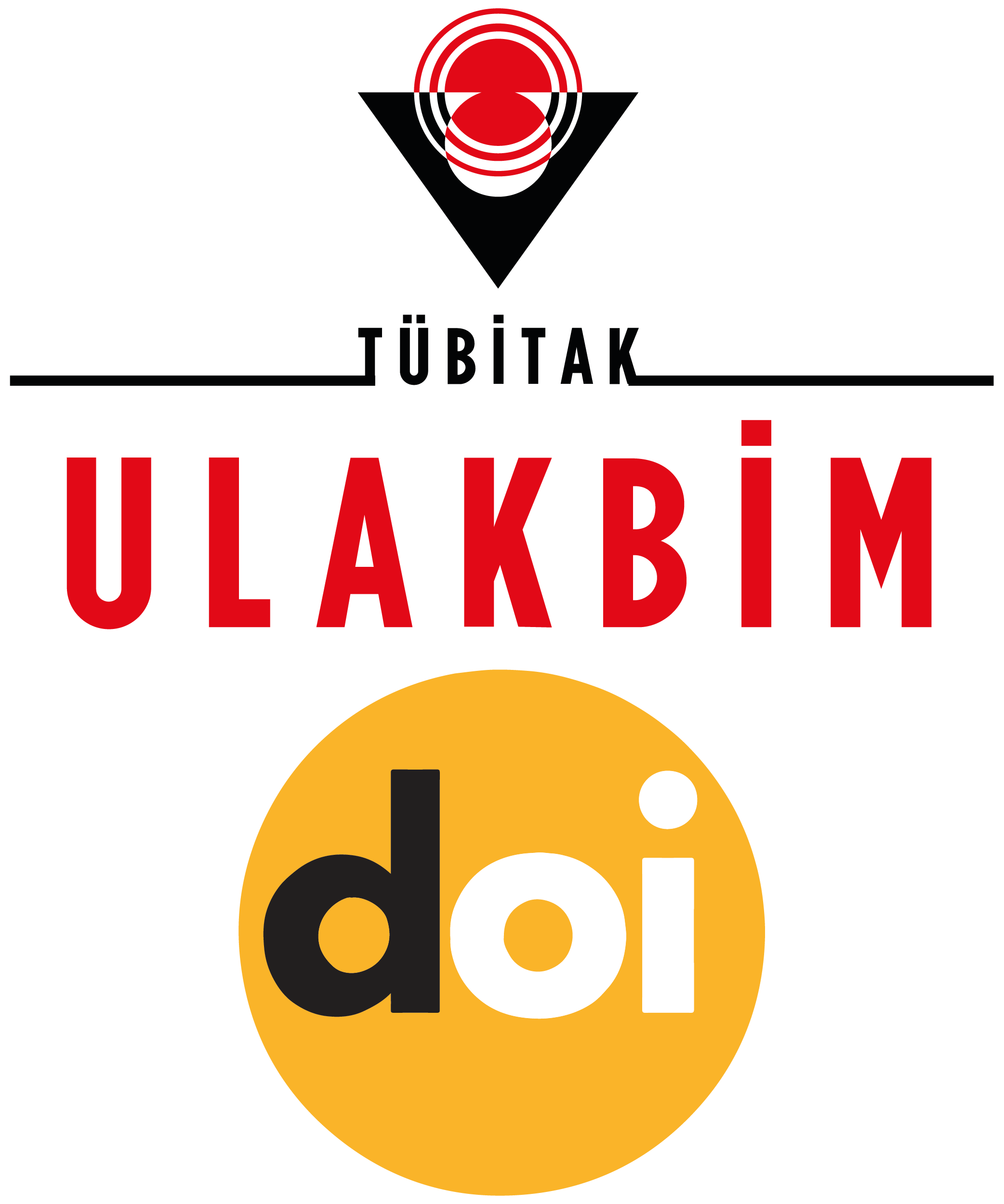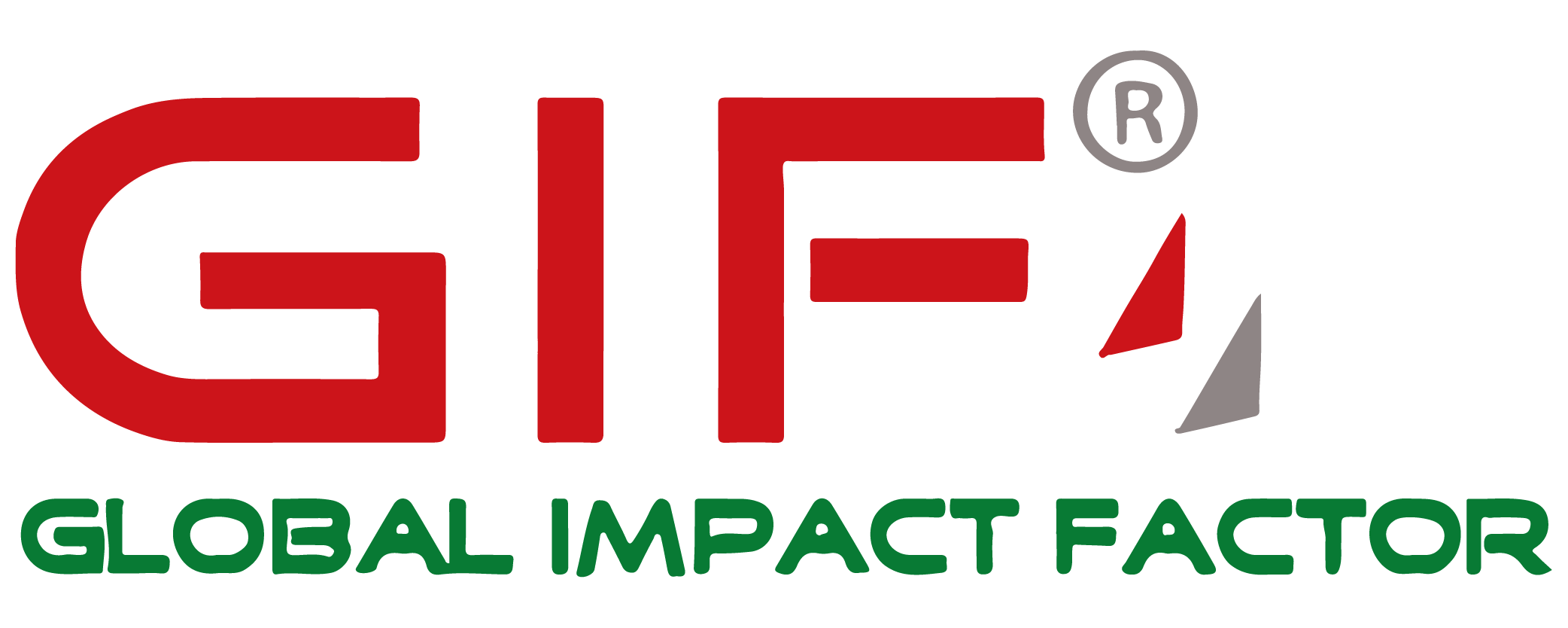Turizm Sektöründe Sosyal Medya İletişiminin, Duyusal Markalama, Müşteri Değeri ve Müşteri Sadakatine Etkisi (The Effect of Social Media Communication on Sensory Branding, Customer Value and Customer Loyalty in the Tourism Sector)
DOI:
https://doi.org/10.21325/jotags.2021.788Keywords:
Tourism, Social media, Sensory branding, Customer value, Customer loyaltyAbstract
Tourism is a sector that communication and interaction between individuals is experienced. Especially with Web 4.0, tourism establishments could communicate with their customers and carry out product promotion activities. Thus, they could carry out such product promotion activities by appealing to the senses of the customers, thanks to the social media platforms. This research covers the customers who have stayed in the accommodation establishments in Ayvalık and using social media. In this study; the relationship between social media communication, sensory branding, customer value and customer loyalty in the tourism sector have been examined. After the analyzes have been carried out in this study, it has been determined that social media communication in tourism has a positive effect on sensory branding, customer value and customer loyalty. Besides, it has been determined that the sensory branding activities carried out by tourism establishments, have a positive effect on customer value and customer loyalty. Finally, it has been determined that the value perceived by customers in tourism, positively affects customer loyalty. With all these results obtained in the research, suggestions have been presented to researchers and tourism establishments.
References
Aslaner, N. (2010) Koku markalar. Legal Fikri ve Sınai Haklar Dergisi, 6(21), (71-82).
Aymankuy, Y., Soydaş, M. E., & Saçlı, Ç. (2013). Sosyal medya kullanımının turistlerin tatil kararlarına etkisi: Akademik personel üzerinde bir uygulama, International Journal of Human Sciences, 10(1), 376-397.
Batı, U. (2012). Markethink ya da Farkethink! “Deneyimsel pazarlama ve duyusal markalama”. İstanbul: İyi Yayınları.
Browning, V., So, K. K. F. & Sparks, B. (2013). The influence of online reviews on consumers’ attributions of service quality and control for service standarts in hotels, Journal of Travel & Tourism Marketing, 30, 23-40.
Buhalis, D. (2003). Etourism: Information technology for strategic tourism management, Harlow: Financial Times Prentice Hall.
Chen, C. F., & Tsai, M. H. (2008). Perceived value, satisfaction and loyalty of tv travel product shopping: Involvement as a moderator, Tourism Management, 29, 1166-1171.
Cronin, J. J., Brady, M. K., & Hult, G. T. (2000). Assessing the effects of quality, value, and customer satisfaction on consumer behavioral intentions in service environments. Journal of Retailing, 76(2), 193-218.
Çakır, S. Y. (2010). Markaların duyular yoluyla şekillenmesi. Erciyes Üniversitesi İletişim Fakültesi Dergisi, 1(4), (39-62).
Çetintürk, İ. (2016). Müşteri değeri, müşteri tatmini ve marka sadakati: Üniversite sosyal tesisleri üzerine bir araştırma. Seyahat ve Otel İşletmeciliği Dergisi, 14(2), 93-109.
Ditoiu, M., & Catuntu, A. (2014). Sensory experiences regarding five-dimensional brand destination, Procedia Social and Behavioral Sciences, 109, 301-306.
Dong, P., & Siu, N. Y. (2013). Servicescape elements, customer predispositions and service experience: The case of theme park visitors, Tourism Management, 36, 541-551.
Eley, B., & Tilley, S. (2009). Online marketing inside out, Austraila: Sitepoint Pty. Ltd.
Ercan, F. (2016). Otel işletmelerinde sosyal medyanın müşteri e-sadakati üzerine etkisi: Facebook örneği. (Doktora Tezi). Adnan Menderes Üniversitesi, Sosyal Bilimler Enstitüsü, Aydın.
Eryılmaz, B., & Şengül, S. (2016). Sosyal medyada paylaşılan yöresel yemek fotoğraflarının turistlerin seyahat tercihleri üzerindeki etkisi, Uluslararası Türk Dünyası Turizm Araştırmaları Dergisi, 1(1), 32-42.
Gobe, M. (2001) Emotional branding; The new paradigm for connecting brands to people, New York: Allworth Press.
Gülmez, E. (2017). Marka tercihinde duyuların rolü: Starbucks ve Kahve Dünyası markalarının duyusal markalama açısından karşılaştırılması, Gümüşhane Üniversitesi İletişim Fakültesi Elektronik Dergisi, 5(1), 59-84.
Hallowell, R. (1996). The relationships of customer satisfaction, customer loyalty, and profitability: An empirical study. International Journal of Service Industry Management,7(4) 27-42.
Hasıloğlu, B. S. (1999). Enformasyon toplumunda elektronik ticaret ve stratejileri, İstanbul: Türkmen Kitabevi.
Helm, R., & Höser, H. (1995). The need for economic and pre-economic marketing controlling, Marketing Intelligence & Planning, 13(4), 10-15.
Hulten, B. (2011). Sensory marketing: The multi-sensory brand-experience concept, European Business Review, 23(3), 256-273.
Inversini, A., & Masiero, L. (2014). Selling rooms online: The use of social media and online travel agents. International Journal of Contemporary Hospitality Management, 26(2), 272-292.
Kahvecioğlu, J. (2018). Otel işletmelerinde duyusal pazarlama uygulamalarının müşteri sadakatine etkisi: Bodrum örneği (Yüksek Lisans Tezi). Muğla Sıtkı Koçman Üniversitesi Sosyal Bilimler Enstitüsü, Muğla.
Kaplan, A. M., & Haenlein, M. (2010). Users of the world, unite! The challenges and opportunities of Social media, Business Horizons, 53, 59-68.
Kim, K. J., Jeong, I. J., Park, J. C., Park, Y. J., Kim, C. G., & Kim, T. H. (2007). The impact of network service performance on customer satisfaction and loyalty: High-speed internet service case in Korea. Expect Systems with Applications, 32, 822-831.
Kim, W. G., Rachjaibun, N., Han, J. S., & Lee, G. (2011). The influence of hotel website factors on e-loyalty in a b2c context, Tourism Economics, 17(5), 1103-1127.
Kim, S. H., Holland, S., & Han, H. S. (2013). A structural model for examining how destination image, perceived value and service quality affect destination loyalty: A Case of Orlando, International Journal of Tourism Research, 15, 313-328.
Kotler, P., & Keller, K. L. (2006). Marketing management, A.B.D.: Pearson Prentice Hall.
Kozak, M. (2018). Bilimsel araştırma: Tasarım, yazım ve yayım teknikleri, Ankara: Detay Yayıncılık.
Kutlu, D., & Ayyıldız, H. (2017). Konaklama işletmelerinde elektronik ağızdan ağıza iletişimin tüketici ve oteller açısından değerlendirilmesi, Turizm ve Arastırma Dergisi, 6(1), 40-58.
Kwon, J. M., Bae, J. I., & Phelan, K. (2011). Online consumer herding behaviors in the hotel industry. 16th Graduate Students Research Conference, Houston, Texas.
Lai, I. K. W. (2014). The role of service quality, perceived value, and relationship quality in enhancing customer loyalty in the travel agency sector, Journal of Travel & Tourism Marketing, 31(3), 417-442.
Lee, S., Jin, N. P., & Lee, H. (2014). The moderating role of water park service quality, environment, image, and food quality on perceived value and customer loyalty: A south korean case study. Journal of Quality Assurance in Hospitality & Tourism, 15(1), 19-43.
Lee, C., Yoon, Y., & Lee, S. (2007). Investigating the relationships among perceived value, satisfaction, and recommendations: The case of the Korean DMZ, Tourism Management, 1(28), 204-214.
Li, K., Jiang, Y., & Kim, Y.T. (2012). Effects of customer experience on customer loyalty in upscale hotels in China, Hotel Business Studies, 21(4), 107-132.
Lu, I., & Shiu, J. Y. (2011). Decision-making framework of customer perception of value in Taiwanese spa hotels, Social Behavior and Personality, 39(9), 1183-1192.
Magi, A. W. (2003). Share of wallet in retailing: The effects of customer satisfaction, loyalty cards and shopper characteristics, Journal of Retailing, 79(2), 97-106.
Mowlana, H. (1997). Global ınformation and world communication, London: Longman.
Namkung, Y., & Jang, S. (2008). Are highly satisfied restaurant customers really different? A quality perception perspective. International Journal of Contemporary Hospitality Management, 20(2), 142-155.
Nguyen, N., & Leblanc, L. (2002). Contact personnel, physical envirorment and the perceived corporate image of tangible services by new clients. International Journal of Service Industry Management, 13(3), 242-262.
Oliver, R. L. (1997). Satisfaction: A behavioral perspective on the consumer, Boston: Irwin/The McGraw-Hill Companies.
Parasuraman, A. (1997). Reflections on gaining competitive advantage through customer value. Journal of the Academy of marketing Science, 25(2), 154-161.
Pawaskar, P., & Goel, M. (2014). A conceptual model: Multisensory marketing and destination branding. Procedia Economics and Finance, 11, 255-267.
Ren, L., Qiu, H., Wang, P., & Lin, P.M.C. (2016). Exploring customer experience with budget hotels: Dimensionality and satisfaction. International Journal of Hospitality Management, 52, 13-23.
Roberts, R. R., & Kraynak, J. (2008). Walk Like a Giant, Sell Like a Madman, New Jersey: Wiley.
Rosman, R., & Stuhura, K. (2013). The implications of social media on customer relationship management and the hospitality industry, Journal of Management Policy and Practice, 14(3), 18-26.
Ruiz-Mafe, C., Marti-Parreno, J., & Sanz-Blas, S. (2014). Key drivers of consumer loyalty to Facebook fan pages, Online Infırmation Review, 38(3), 362-380.
Ryu, K., & Jang, S. (2008). A scale for customers' perception of dining environments. Journal of Foodservice Business Research, 11(1), 2-22.
Sağlam, K. (2019). Müşteri tatmininde müşteri değerinin önemi ve bir araştırma (Yüksek Lisans Tezi). Bahçeşehir Üniversitesi, Sosyal Bilimler Enstitüsü, İstanbul.
Schinivski, B., & Dabrowski, D. (2016). The effect of social media communication on consumer perceptions of brands. Journal of Marketing Communications, 22(2), 189-214.
Siu, N. Y., Wan, P. Y. K., & Dong, P. (2013). The impact of the service scape on the desire to stay in convention and exhibition centers: The case of Macao, International Journal of Hospitality Management, 31, 236-246.
Sun, B. J. (2004). Brand equity, perceived value and revisit ıntention in the us mid-priced hotel segment (Yüksek Lisans Tezi). Faculty of the Graduate College of the Oklahoma State University, Oklahama.
Tabachnick, B. G., & Fidell, L. S. (2007). Using multivariate statistics. 5. Basım, Boston: Pearson.
Tosun, N. B., & Elmasoğlu, K. (2015). Duyusal markalamanın marka sadakati üzerindeki rolü, Maltepe Üniversitesi İletişim Fakültesi Dergisi, 2(1), 91-111.
Tsaur, S. H., Chiu, Y. C., & Huang, C. H. (2002). Determinants of guest loyalty to international tourist hotels-a neural network approach. Tourism Management, 23, 397-405.
Tsaur, S., Huang, C., & Luoh, H. (2014). Do travel product types matter? Online review direction and persuasiveness. Journal of Travel & Tourism Marketing, 31, 884-898.
Tsiros, M., Mittal, V., & Ross, W. T. (2004). The role of attributions in customer satisfaction: A reexamination, Journal of Consumer Research, 31(2), 476-483.
Türkmendağ, T., & Hassan, A. (2018). Müşteri sadakati oluşturmada algılanan değerin etkisi: Bir cağ kebap restoranı örneği, MANAS Sosyal Araştırmalar Dergisi, 7(3), 748-775.
Ural, A., & Kılıç, İ. (2013). Bilimsel araştırma süreci ve SPSS ile veri analizi, Ankara: Detay Yayıncılık.
Wiedmann, K. P., Labenz, F., Haase, J., & Hennigs, N. (2018). The power of experiential marketing: Exploring the causal relationships among multisensory marketing, brand experience, customer perceived value and brand strength. Journal of Brand Management, 25(2), 101-118.
Woodruff, R. (1997). Customer value: The next source for competitive advantage, Journal of Academy of Marketing Science, 25(2), 139-153.
Yazıcıoğlu, İ., Alphan, E., & Onur, M. (2020). Aşırı turizm kapsamında Tripadvisor yorumları üzerine nitel bir inceleme: Salda gölü örneği, Journal of Tourism and Gastronomy Studies, 4, 505-522.
Zengin, B., & Arıcı, S. (2017). Konaklama işletmelerinin sosyal medya kullanım şekillerinin tüketici satın alma niyeti üzerindeki etkisi, İşletme Araştırmaları Dergisi, 9(4), 375-399.
Zeithaml, V. A., Berry, L. L., & Parasuraman, A. (1996). The behavioral consequences of service quality, Journal of Marketing, 60(2), 31-46.
Zhang, Z., Ye, Q., Law, R., & Li, Y. (2010). The impact of e-word-of-mouth on the online popularity of restaurants: A comparison of consumer reviews and editor reviews, International Journal of Hospitality Management, 29, 694–700.
Downloads
Published
How to Cite
Issue
Section
License
Copyright (c) 2023 Journal of Tourism & Gastronomy Studies

This work is licensed under a Creative Commons Attribution-NonCommercial 4.0 International License.








